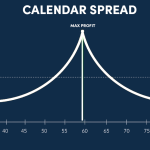
By ATGL
Updated July 31, 2025
Successful investing requires sophisticated risk management techniques that help you navigate unpredictable market conditions. Understanding how your portfolio responds to market volatility forms the foundation of effective investment planning. Portfolio beta serves as a critical metric for measuring this relationship, providing you with quantifiable data about your portfolio’s sensitivity to market movements. This article explores portfolio beta calculation methods, interpretation guidelines, and practical applications for optimizing your investment approach.
What Is Portfolio Beta? A Simple Explanation
Portfolio beta measures how much your investment portfolio moves relative to the overall market. When the market rises or falls by a certain percentage, portfolio beta indicates whether your holdings will experience greater, lesser, or similar percentage changes. This metric aggregates the individual beta values of all securities within your portfolio, weighted by their respective allocations.
Portfolio beta represents the weighted average of individual stock betas within your investment holdings. Unlike individual stock beta, which measures a single security’s market sensitivity, portfolio beta provides a comprehensive view of your entire investment collection’s market risk exposure.
The beta for market portfolio equals 1.0 by definition, serving as the baseline for comparison. Your portfolio beta compares directly against this market benchmark, revealing whether your investments amplify or dampen market movements.
What Makes Portfolio Beta Important for Your Investments
Portfolio beta helps you assess systematic risk exposure and align your holdings with personal risk tolerance levels. High-beta portfolios generate larger gains during market upswings but also produce more significant losses during downturns. Low-beta portfolios offer stability but may underperform during strong market rallies.
Understanding your portfolio’s beta coefficient enables more informed asset allocation decisions. Investors approaching retirement typically prefer lower beta values for capital preservation, while younger investors might accept higher beta exposure for growth potential. Beta analysis also supports tactical allocation adjustments based on market conditions and economic cycles.
Risk-adjusted return calculations rely heavily on portfolio beta measurements. Without understanding your portfolio’s market sensitivity, evaluating performance relative to assumed risk becomes impossible.
How To Calculate the Portfolio Beta
Calculating portfolio beta requires three essential steps that combine individual security data with portfolio allocation percentages.
First, gather the beta coefficients for each security in your portfolio. These values are readily available through financial data providers, brokerage platforms, and investment research services. Stock betas typically range from 0.5 to 2.0, though some securities fall outside this range.
Second, determine each security’s weight within your total portfolio value. Calculate this by dividing each holding’s market value by your total portfolio value. For example, if you own $5,000 of Stock A in a $50,000 portfolio, Stock A represents 10% of your holdings.
Third, apply the beta of a portfolio formula by multiplying each security’s beta by its portfolio weight, then summing these products. This weighted average calculation produces your overall portfolio beta.
Beta of a Portfolio Formula
The mathematical formula for portfolio beta appears as:
Portfolio Beta = Σ (Weight of Security × Beta of Security)
Consider a practical example with three holdings:
- Stock A: 40% allocation, beta = 1.2
- Stock B: 35% allocation, beta = 0.8
- Stock C: 25% allocation, beta = 1.5
Portfolio Beta = (0.40 × 1.2) + (0.35 × 0.8) + (0.25 × 1.5) = 0.48 + 0.28 + 0.375 = 1.135
This portfolio exhibits slightly higher volatility than the overall market.
Interpreting Beta Values: What the Numbers Mean
Beta values communicate specific information about portfolio risk characteristics. A portfolio beta of 1.0 moves precisely with market fluctuations, rising and falling by the same percentages as broad market indices.
Portfolio beta below 1.0 indicates lower volatility than the market. A 0.5 beta suggests your portfolio typically moves half as much as market changes. When markets decline 10%, a 0.5 beta portfolio might fall only 5%. Conversely, during 10% market gains, this portfolio might advance just 5%.
Beta values above 1.0 signal higher volatility than market averages. A 1.5 beta portfolio amplifies market movements by 50%. Market declines of 10% could translate to 15% portfolio losses, while 10% market gains might produce 15% portfolio increases.
Zero beta indicates no correlation with market movements, while negative beta suggests inverse market relationships. These scenarios occur rarely in diversified portfolios but can result from specialized holdings or technical stock analysis strategies.
What Portfolio Beta Tells You About Risk and Return
Portfolio beta directly relates to expected returns and risk exposure levels. Higher beta portfolios demand greater return premiums to compensate for increased volatility. This risk-return relationship forms the foundation of modern portfolio theory and capital asset pricing models.
Beta coefficients help predict portfolio behavior during different market conditions. Understanding these patterns becomes particularly valuable during bull vs. bear market transitions, when portfolio sensitivity affects overall performance significantly.
Be sure to balance beta exposure with personal financial goals and time horizons. Short-term traders might embrace high-beta positions for profit potential, while long-term investors often prefer moderate beta levels for consistent growth.
How To Adjust Portfolio Beta Based on Your Risk Tolerance
Modifying portfolio beta requires strategic asset allocation changes that align with individual risk preferences and market outlook. Conservative investors can reduce beta by increasing allocations to defensive sectors like utilities, consumer staples, and healthcare companies.
Aggressive investors seeking higher beta exposure typically increase growth stock allocations, particularly in technology, biotech, and emerging market securities. These sectors historically exhibit higher market sensitivity and volatility patterns.
Market timing considerations also influence beta adjustment strategies. During uncertain economic periods, reducing portfolio beta provides downside protection. Conversely, strong economic growth phases may warrant increased beta exposure for enhanced returns.
Using ETFs and Dividend Stocks to Modify Beta
ETF strategies offer efficient methods for adjusting portfolio beta without extensive individual stock research. Low-volatility ETFs typically maintain beta coefficients below 0.8, while growth-oriented ETFs often exceed 1.2 beta levels.
Dividend investing strategies generally reduce portfolio beta through defensive stock selections. Mature companies paying consistent dividends typically exhibit lower market sensitivity than growth stocks. Dividend aristocrats and utility stocks particularly contribute to beta reduction while providing income generation.
Sector rotation using ETFs enables tactical beta adjustments based on economic cycles and market conditions. Technology and financial sector ETFs increase beta exposure, while utility and consumer staple ETFs reduce overall portfolio sensitivity.
Aligning Beta With Your Investment Strategy
Portfolio beta serves as a fundamental tool for aligning your holdings with specific investment strategy objectives. Whether pursuing income generation, capital appreciation, or capital preservation, understanding your portfolio’s market sensitivity guides more effective allocation decisions.
Successful investors regularly monitor and adjust their portfolio beta as market conditions evolve and personal circumstances change. This ongoing process helps maintain appropriate risk levels while pursuing targeted financial goals.
Ready to optimize your portfolio’s risk-return profile through sophisticated beta analysis? Above the Green Line’s membership platform provides advanced tools and professional guidance for implementing effective portfolio beta strategies tailored to your investment objectives.






